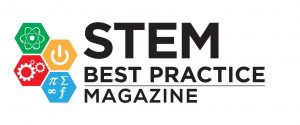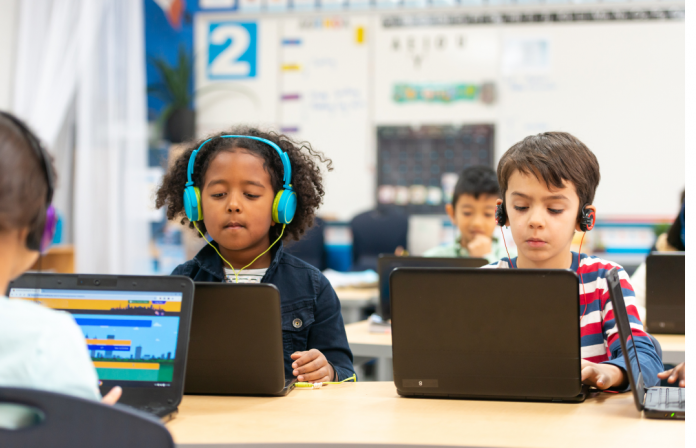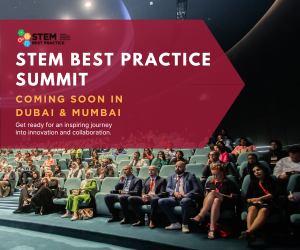Fatima Rihane – Senior Educational Development Manager at Casio: Leading Innovation in Education

Fatima Rihane, with her extensive educational experience, is leading the Education Department at CASIO Middle East and Africa, serving as the Senior Manager. With a foundation grounded in a dual master’s degree, her educational acumen has been further enriched through her tenure as lecturer at the Canadian University of Dubai.
Dedicated to advancing educational methods, Fatima continuously refines her expertise. She actively participates in and creates a plethora of teaching development materials, specifically geared towards Mathematics. This material encompasses modern pedagogical techniques, curriculum design, and the promotion of critical thinking. In her endeavors, she works in close collaboration with various ministries of education across the Middle East and Africa. Having been exposed to a myriad of curricula, Fatima champions adaptability and believes firmly in collaborative efforts to navigate and address the evolving landscape of education.
- What do you see as the most significant developments or trends in EdTech for STEM education in the past year?
Over the past year, several notable trends and advancements have emerged in Edtech for STEM education:
Immersive Experiences with VR/AR: The rise of Virtual and Augmented Reality technologies in educational settings is transforming learning. These tools breathe life into abstract STEM subjects, allowing students, for instance, to explore cellular structures virtually or embark on a digital journey across Mars.
Personalized Learning through Adaptive Platforms: Some cutting-edge platforms now customize content based on individual student progress. By pinpointing specific challenges a student faces, these platforms tailor the learning journey to ensure each individual moves forward at a pace that suits them.
Interactive Learning with Gamification: The integration of game mechanics into learning resources has added a fun element to education. Several games tailored for STEM education facilitate experimental learning, problem-solving, and interactive engagement.
Virtual Experimentation Spaces: The advent of online labs and simulations has removed traditional barriers to experimental learning. Students can now safely and cost-effectively conduct experiments that might have been out of reach in conventional classroom settings.
Broadened Coding Integration: Coding has expanded its horizons beyond just computer science. Innovative platforms are introducing programming within various STEM subjects, showcasing its versatility and relevance in multiple domains.
Emphasis on Essential Life Skills: The perception of STEM is evolving, shifting from purely technical knowledge to a more holistic approach. New tools are emerging that prioritize teaching skills like critical thinking, problem-solving, and effective communication, recognizing that these are as vital as hard skills in STEM fields.
- How can EdTech better support underrepresented groups and increase diversity in STEM fields?
Edtech can foster diversity in STEM by emphasizing culturally relevant content, ensuring accessibility for all students, offering affordable or free resources, and providing mentorship opportunities. Platforms should support multiple languages, promote flexible learning paths, and facilitate community building for underrepresented students. Additionally, highlighting diverse STEM role models, engaging student’s early, training educators in equity and inclusion, using data to identify learning gaps, and partnering with grassroots organizations can further bridge the gap.
- In your opinion, what qualities should educators and administrators look for in selecting EdTech solutions for their STEM programs?
When selecting edtech for STEM, educators should prioritize tools rooted in sound pedagogy with user-friendly interfaces. Solutions should be customizable, interactive, scalable, and inclusive. It’s essential to ensure cultural relevance, data analytics capabilities, and robust security. Cost-effectiveness, integration with other platforms, and strong support from providers are crucial. Collaborative features, adaptability to different learning environments, continuous updates, and feedback mechanisms further enhance the tool’s efficacy and relevance.
- What do you think are the best practices or recommendations you can offer to schools and institutions looking to implement EdTech effectively in their STEM curricula?
Implementing edtech effectively in STEM curricula can enhance learning experiences, but it requires careful planning and strategy. Here are some best practices and recommendations for schools and institutions:
Needs Assessment: Begin with a thorough analysis of what the institution, educators, and students need. What challenges exist, and how can edtech address them?
Pilot Programs: Before a full-scale rollout, test the edtech tool with a smaller group to gauge its effectiveness and identify potential challenges.
Professional Development: Ensure that educators are well-trained on the new tools. Ongoing professional development sessions can help them adapt to changes and explore advanced features.
Student Orientation: Familiarize students with the technology through orientation sessions, ensuring they can navigate and use the tools effectively.
Infrastructure Check: Ensure that the school’s infrastructure, including internet connectivity, devices, and bandwidth, can support the new tools without glitches.
Feedback Loops: Establish mechanisms for educators and students to provide feedback. This will be invaluable for refining the implementation process.
Evaluate and Adjust: Regularly assess the effectiveness of the edtech tools. Are learning objectives being met? Adjust strategies based on these evaluations.
Community Involvement: Engage parents and the wider community in understanding the purpose and benefits of the edtech implementations.
By adhering to these best practices, schools and institutions can ensure that their edtech implementations in STEM curricula are not just effective, but also enriching and inclusive for all students.
- Are there any final thoughts or recommendations you’d like to share with our readers regarding the intersection of EdTech and STEM education?
The intersection of edtech and STEM education represents a convergence of innovation in teaching and learning. Here’s a message for teachers, parents, and students navigating this exciting crossroad:
To Teachers: Embrace edtech as a dynamic partner in your teaching journey. While technology can’t replace the human touch, it can amplify your impact. Use it to cater to diverse learning styles, foster collaboration, and make abstract STEM concepts tangible. Continuous professional development is crucial; stay updated with the latest tools, but always prioritize pedagogy over technology. Remember, it’s not about using the newest tool but the right tool to achieve your learning objectives.
To Parents: Support and engage in your child’s learning journey. The digital age offers countless opportunities, but it also brings challenges. Establish healthy tech habits at home and encourage a balance between screen time and offline activities. Familiarize yourself with the tools your child is using to foster a supportive environment. Lastly, maintain open communication with teachers and be proactive in understanding the role of edtech in your child’s education.
To Students: You’re at the forefront of a revolution in learning. Embrace edtech as a means to explore, collaborate, and deepen your understanding. While these tools can make learning more engaging, remember to be responsible online. Protect your personal information, practice digital etiquette, and be discerning with the content you consume. As you navigate the world of STEM, use technology not just as a passive recipient but as a creator and innovator. The future of STEM, fused with edtech, is in your hands.
In essence, the synergy of edtech and STEM education offers boundless potential. But like any tool, its efficacy lies in how it’s used. Through collaboration, continuous learning, and a shared vision for the future, teachers, parents, and students can harness the best of both worlds.




